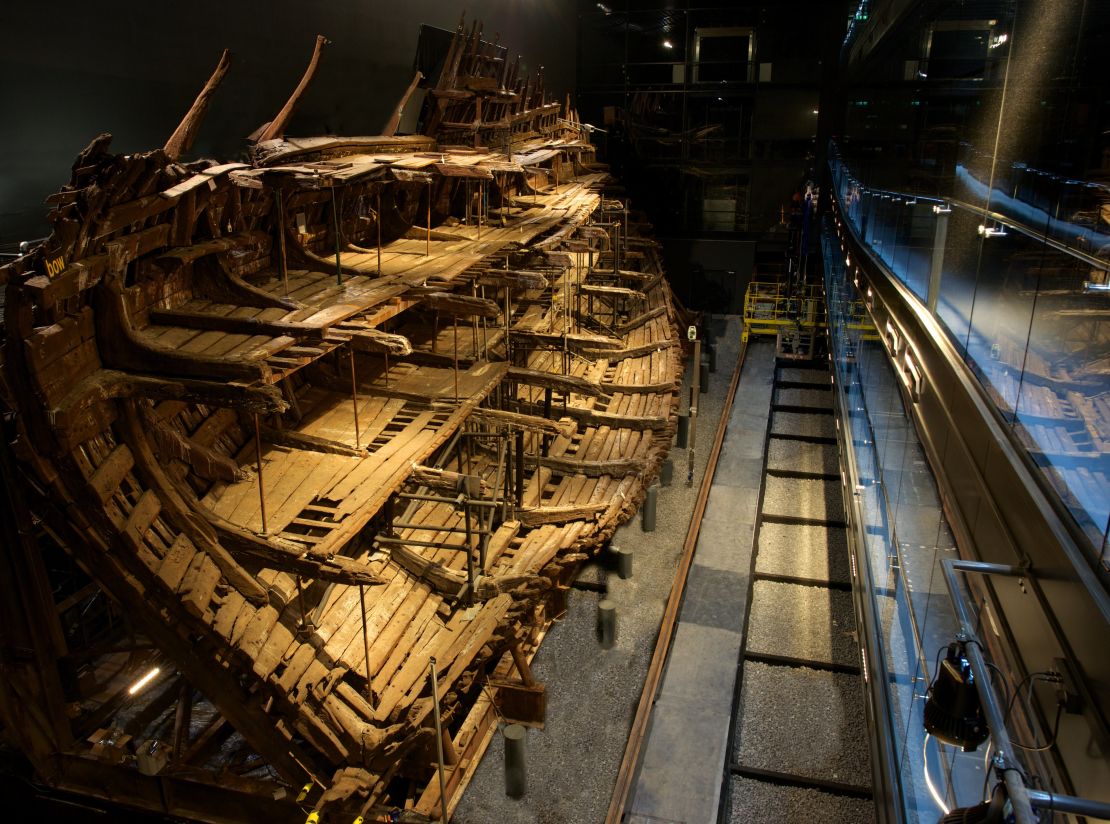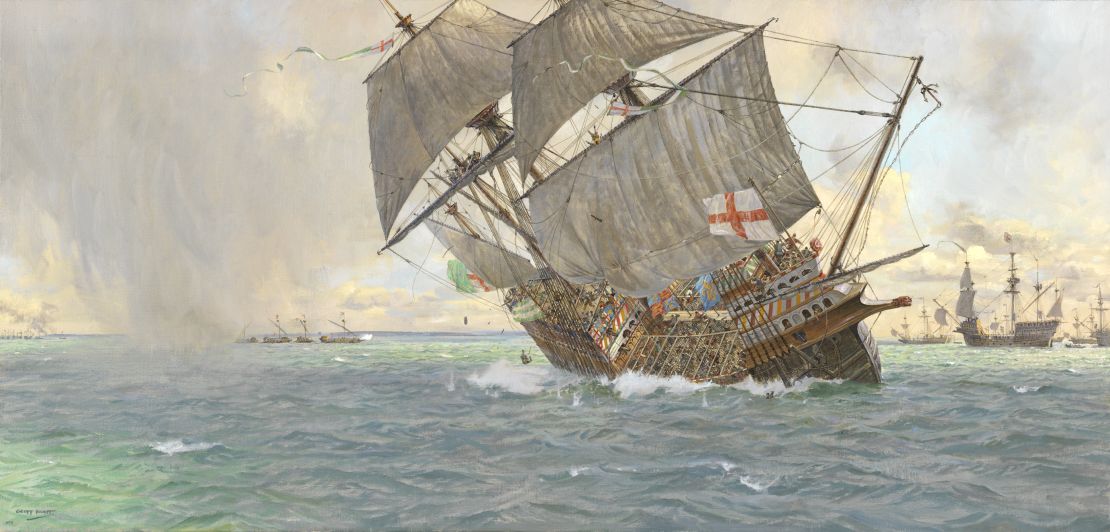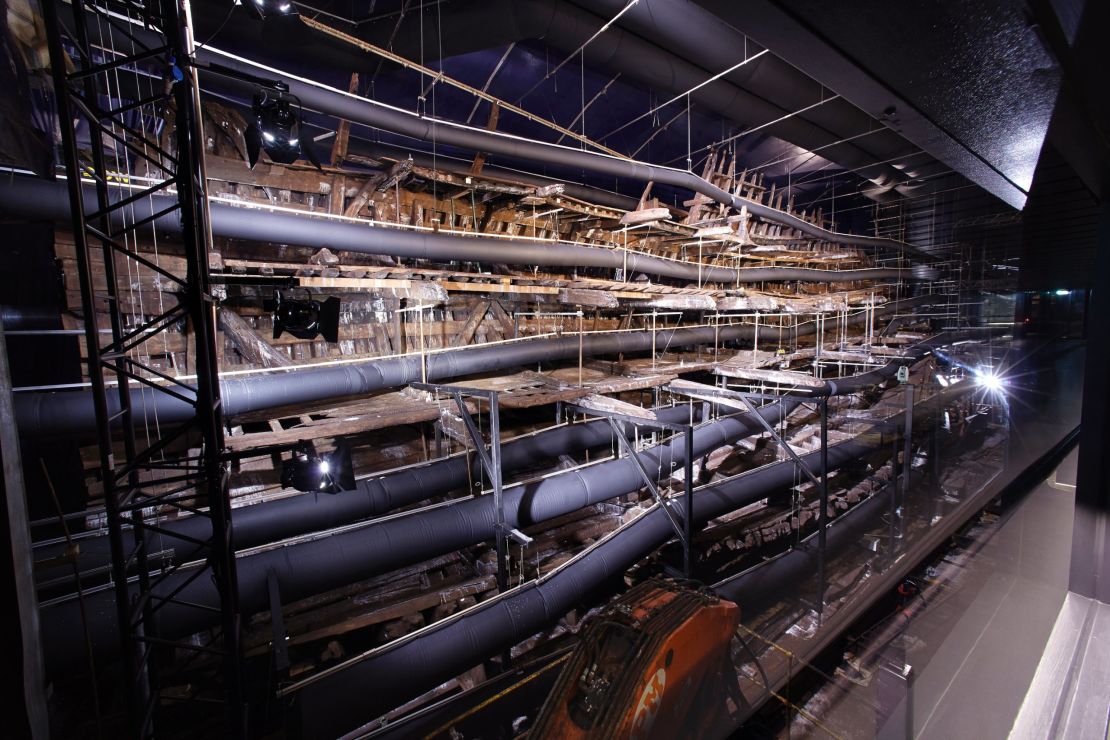Story highlights
Restoration of ship has taken 34 years.
Public gets first view on Wednesday.
A restored Tudor warship, originally launched during the reign of Henry VIII, is about to be unveiled in Portsmouth, UK following a £5.4 million revamp.
The Mary Rose was discovered in 1971, raised in 1982 and has since undergone 34 years of conservation work.
The warship first went on display at the Mary Rose Museum in 2013, enclosed in a special conservation box with small viewing windows, which prevented the public from seeing the full ship.

After more restoration work began in November, conservationists removed some of the walls to provide panoramic views of the ship from nine galleries through floor-to-ceiling glazing on the lower and main decks. The results of their hard work will be visible to the public from Wednesday.
The ship, originally built as part of Henry VIII’s plan to expand his “army by sea” was first launched in 1511.

It sank during the Battle of the Solent in 1545 although it is still not exactly clear why. Many of the ship’s crew died when she went down.
Related: Mary Rose Museum: Life on a 16th-century warship revealed
“The story of the Mary Rose spans almost 500 years and this is a very exciting close to the latest chapter in her history,” Helen Bonser-Wilton, chief executive of the Mary Rose Trust said in a statement.

“This is the culmination of decades of hard work by the Mary Rose team and we can’t wait to share this stunning new experience with everyone.”
The removing of the walls to create a panoramic view is just the latest development in what has been a long project for archaeologists restoring the ship.

After the ship was raised, its hull was first sprayed with a mist of fresh chilled water and then with a water-soluble wax from 1994 to April 2013, before the air-drying process began.
The whole restoration project cost £39 million.



